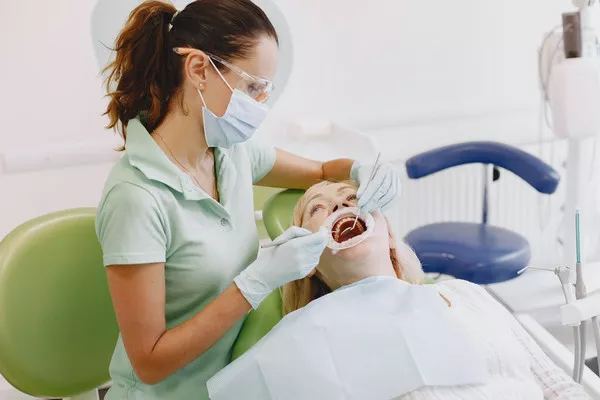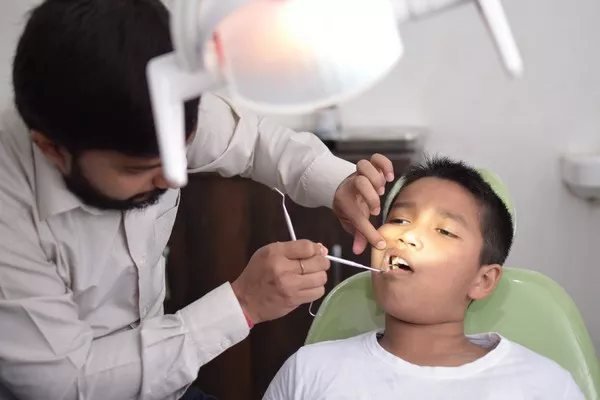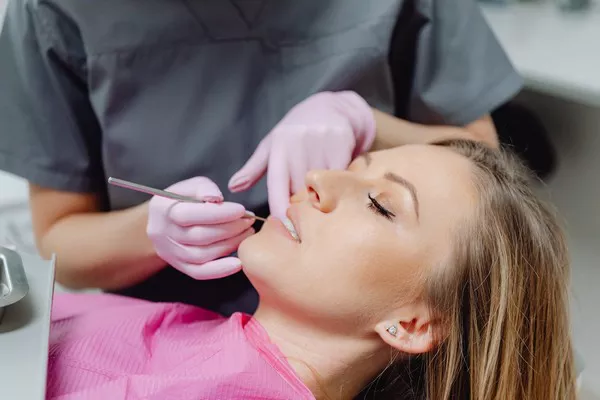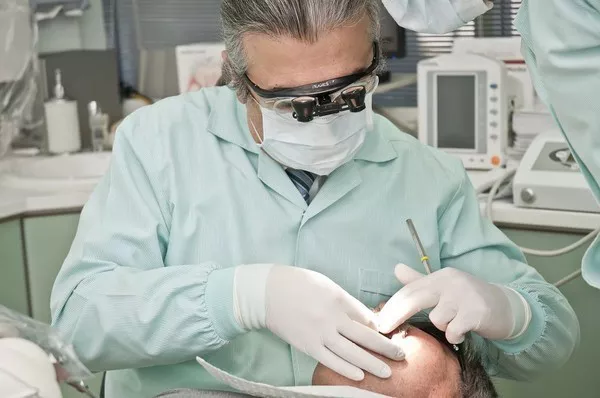Teeth whitening has become a popular procedure for those seeking a brighter, more radiant smile. However, many people are concerned about the potential damage that whitening treatments might cause to their teeth. This article aims to address these concerns by discussing the safety of teeth whitening, potential side effects, differences between professional and at-home treatments, the importance of a pre-whitening dental examination, how the whitening process works, the types of stains that can be treated, long-term effects, and cost considerations.
Safety of Teeth Whitening
When performed correctly, teeth whitening is generally safe and does not cause permanent damage to tooth enamel. The key ingredients in most whitening products, hydrogen peroxide and carbamide peroxide, work by penetrating the enamel to reach discolored molecules within the tooth. Research has shown that when used as directed, these agents do not significantly alter the structure or hardness of tooth enamel.
Professional whitening treatments conducted by dental professionals ensure that the correct concentration of whitening agents is used, and protective measures are in place to safeguard the gums and other soft tissues. Over-the-counter products also undergo rigorous testing to ensure they are safe for consumer use. However, it is crucial to follow the instructions provided with any whitening product to avoid potential risks.
Possible Side Effects
While teeth whitening is safe, it can cause some temporary side effects, including tooth sensitivity and gum irritation. Tooth sensitivity occurs when the whitening agents penetrate the enamel and reach the nerves in the teeth. This can cause discomfort, especially when consuming hot or cold foods and beverages. Gum irritation can happen if the whitening gel comes into contact with the soft tissues of the mouth.
To mitigate these side effects, consider the following tips:
Use Desensitizing Products: Toothpastes and gels designed to reduce sensitivity can help alleviate discomfort. These products often contain ingredients like potassium nitrate or fluoride that soothe the nerves in the teeth.
Adjust Treatment Frequency: Reducing the frequency or duration of whitening treatments can minimize sensitivity and irritation. For example, instead of daily treatments, opt for every other day.
Consult a Dentist: A dental professional can recommend products or techniques to minimize side effects. They may also provide custom-fitted trays that reduce the risk of gum irritation by ensuring a more precise application of the whitening gel.
Avoid Certain Foods and Beverages: During and after whitening treatments, avoid acidic or highly pigmented foods and drinks that can exacerbate sensitivity or stain newly whitened teeth.
Professional vs. At-Home Whitening
Professional dental whitening treatments and at-home products both offer effective solutions for achieving a brighter smile, but there are key differences in terms of safety, effectiveness, and convenience.
Professional Whitening Treatments
Safety: Professional treatments are conducted under the supervision of a dentist, ensuring the correct concentration of whitening agents is used and protective measures are in place to prevent gum irritation and other side effects.
Effectiveness: Professional treatments often use stronger whitening agents, resulting in more noticeable and faster results. In-office procedures like laser whitening or light-activated systems can enhance the effectiveness of the treatment.
Customization: Dentists can create custom-fitted trays that ensure even application of the whitening gel, reducing the risk of uneven whitening and gum irritation.
At-Home Whitening Products
Safety: Over-the-counter products like whitening strips, gels, and toothpaste are generally safe when used as directed. However, there is a higher risk of misuse, which can lead to increased sensitivity and gum irritation.
Effectiveness: At-home products contain lower concentrations of whitening agents compared to professional treatments, which means they may take longer to achieve desired results. However, they can still be very effective for mild to moderate stains.
Convenience: At-home treatments offer the convenience of being done on your own schedule and can be more cost-effective compared to professional treatments.
In summary, while both professional and at-home whitening treatments are effective, professional treatments offer greater safety and faster results under the guidance of a dental professional. At-home products can be a convenient and affordable alternative but require careful use to avoid potential side effects.
Pre-Whitening Dental Examination
Before undergoing any teeth whitening treatment, it is essential to have a dental examination. This examination can identify any underlying issues that could affect the results or safety of the whitening process. For example, cavities, gum disease, or exposed tooth roots can cause increased sensitivity or discomfort during whitening. Additionally, existing dental restorations like crowns, veneers, or fillings will not respond to whitening agents, potentially leading to uneven results.
A dental professional can assess your oral health and determine if whitening is suitable for you. They can also recommend the best whitening method based on your specific needs and monitor the process to ensure it is performed safely and effectively.
Understanding the Whitening Process
Teeth whitening agents, primarily hydrogen peroxide and carbamide peroxide, work by breaking down stains on the enamel and dentin layers of the teeth. Here’s how the process works:
Application: The whitening agent is applied to the teeth, either in a gel, strip, or liquid form.
Penetration: The active ingredient, hydrogen peroxide or carbamide peroxide, penetrates the enamel layer and reaches the discolored molecules within the tooth. Carbamide peroxide breaks down into hydrogen peroxide and urea, with hydrogen peroxide being the active bleaching agent.
Oxidation: The peroxide molecules interact with the stain molecules, causing an oxidation reaction. This reaction breaks the bonds of the stain molecules, effectively making them less pigmented.
Whitening: As the stains are broken down, the overall color of the teeth becomes lighter. Multiple applications may be necessary to achieve the desired level of whitening.
The effectiveness of the whitening process depends on several factors, including the concentration of the whitening agent, the duration of application, and the type of stains being treated.
Types of Stains
Extrinsic Stains
Causes: Extrinsic stains are surface stains caused by external factors such as food, drinks (like coffee, tea, and red wine), smoking, and poor oral hygiene.
Response to Whitening: These stains are typically easier to remove with whitening treatments because they are located on the outer surface of the teeth. Both professional and at-home whitening products can be effective in treating extrinsic stains.
Intrinsic Stains
Causes: Intrinsic stains are deeper, located within the tooth structure. They can be caused by factors such as aging, trauma to the tooth, certain medications (like tetracycline), and excessive fluoride exposure during tooth development.
Response to Whitening: Intrinsic stains are more challenging to treat with whitening agents alone. While some professional whitening treatments can improve the appearance of intrinsic stains, they may not be as effective as they are for extrinsic stains. In such cases, alternative treatments like veneers or bonding may be recommended to achieve the desired aesthetic results.
Long-Term Effects
Current research indicates that teeth whitening, when performed correctly, does not cause long-term damage to tooth enamel or the overall health of the teeth. However, some considerations should be kept in mind:
Enamel Integrity: Studies have shown that the use of peroxide-based whitening agents does not significantly weaken or erode tooth enamel when used as directed. However, excessive or improper use of whitening products can potentially damage the enamel and lead to increased sensitivity.
Tooth Sensitivity: Repeated whitening treatments can increase tooth sensitivity over time. While this sensitivity is usually temporary, it is important to follow recommended guidelines and allow adequate time between treatments to minimize this risk.
Gum Health: Prolonged exposure to whitening agents can cause gum irritation. It is essential to protect the gums during the whitening process, especially with professional treatments that use higher concentrations of bleaching agents.
Maintenance: To maintain the results of whitening treatments, it is important to practice good oral hygiene and avoid foods and beverages that can stain the teeth. Regular touch-ups may be needed to keep the teeth looking their best.
Cost Considerations
The cost of teeth whitening varies depending on the method chosen and several other factors. Here’s a breakdown of the cost considerations for different whitening methods:
Professional Whitening Treatments
In-Office Whitening: Professional in-office whitening treatments, such as laser whitening or light-activated systems, can cost between $300 to $1,000 per session. The higher cost is due to the advanced technology and the supervision of a dental professional.
Take-Home Kits: Dentists can provide custom-fitted take-home whitening kits, which generally cost between $200 to $400. These kits include professional-grade whitening gel and custom-made trays for a more precise fit.
At-Home Whitening Products
Whitening Strips: Over-the-counter whitening strips are one of the most affordable options, typically costing between $20 to $50 for a month’s supply.
Whitening Gels and Trays: At-home whitening kits that include gels and trays can range from $30 to $150. These products often provide more significant results compared to strips.
Whitening Toothpaste and Rinses: Whitening toothpaste and rinses are the least expensive options, usually costing between $5 to $20. While they can help maintain whitened teeth, their effectiveness for significant whitening is limited.
Factors Influencing Cost
Concentration of Whitening Agent: Higher concentrations of whitening agents generally provide faster and more dramatic results but can be more expensive.
Number of Treatments: The number of treatments required to achieve the desired results can affect the overall cost. Professional treatments may require fewer sessions than at-home products.
Geographic Location: The cost of professional whitening treatments can vary based on the location and the cost of living in that area.
Dental Professional’s Expertise: The experience and reputation of the dental professional performing the whitening treatment can also influence the cost.
Conclusion
Teeth whitening, when performed correctly, is a safe and effective way to achieve a brighter smile. Understanding the potential side effects, the differences between professional and at-home treatments, and the importance of a pre-whitening dental examination can help ensure the best results. By following recommended guidelines and considering the cost and long-term effects, you can make an informed decision about the best whitening method for your needs.
FAQs About Teeth Whitening
1. Does teeth whitening harm your teeth?
Teeth whitening, when done correctly, is generally safe and does not harm your teeth. The key ingredients in most whitening products, such as hydrogen peroxide or carbamide peroxide, work by breaking down stains on the enamel and dentin layers of the teeth. Research has shown that these agents, when used as directed, do not significantly alter the structure or hardness of tooth enamel. However, it is essential to follow the instructions provided with any whitening product to avoid potential risks and ensure the safety of your teeth and gums.
2. What is the least damaging way to whiten your teeth?
The least damaging way to whiten your teeth is to opt for professional whitening treatments conducted by a dental professional. These treatments ensure the correct concentration of whitening agents is used and protective measures are in place to safeguard the gums and other soft tissues. Additionally, dental professionals can customize the treatment to suit your specific needs and monitor the process to ensure it is performed safely and effectively. If you prefer at-home whitening products, choose reputable brands that have undergone rigorous testing to ensure they are safe for consumer use, and follow the instructions carefully to minimize the risk of damage to your teeth.
3. Can teeth look worse after whitening?
In some cases, teeth may appear worse after whitening, especially if the whitening treatment is not performed correctly or if there are underlying dental issues present. For example, if the whitening agent comes into contact with exposed tooth roots or if there are cavities or gum disease present, it can cause increased sensitivity or discomfort. Additionally, if teeth are not properly cleaned before whitening, it can result in uneven whitening or the appearance of blotchy spots. To avoid these issues, it is essential to have a dental examination before undergoing any whitening treatment and to follow recommended guidelines for use.
4. Is it bad to whiten teeth often?
While occasional teeth whitening is generally safe, whitening teeth too often can lead to increased sensitivity and potential damage to the enamel. Over time, the repeated use of whitening products can weaken the enamel and make the teeth more prone to damage and discoloration. It is essential to follow recommended guidelines for the frequency and duration of whitening treatments and to allow adequate time between treatments to minimize the risk of side effects. If you have concerns about the effects of frequent whitening on your teeth, consult with a dental professional for personalized advice and recommendations.
You Might Be Interested In





























